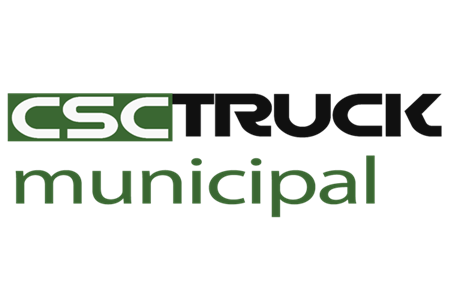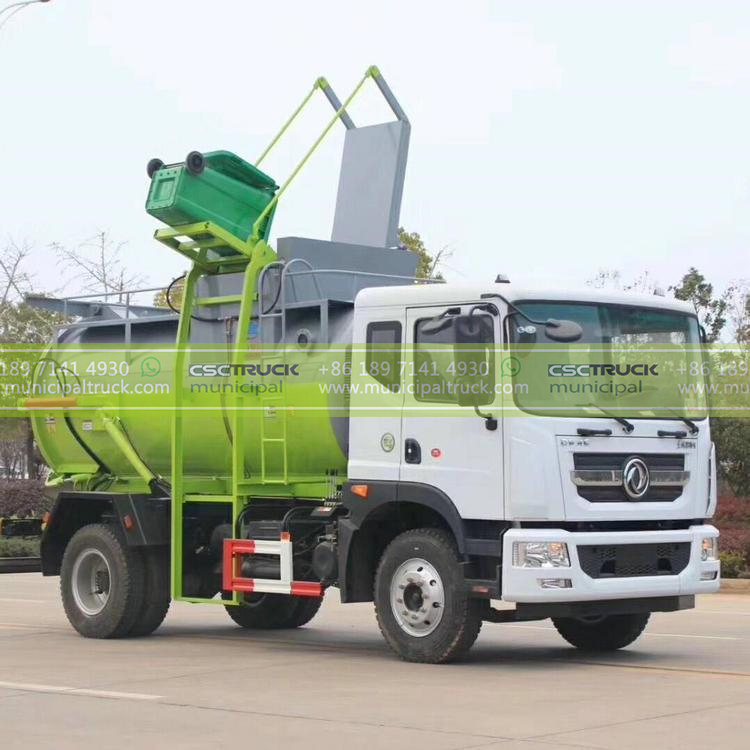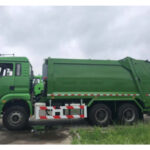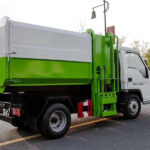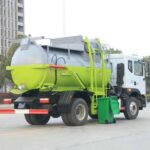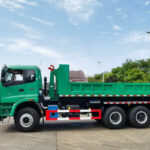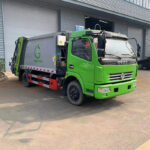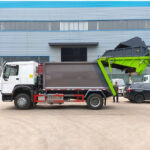Robotic Arm Precision Engineering – Beyond Basic Automation
Modern side loader garbage trucks deploy articulated robotic arms with sub-millimeter positioning accuracy, integrating LiDAR scanners and AI-driven object recognition. Unlike traditional rear loaders requiring human “swampers,” these systems autonomously identify bin RFID tags within 0.8-second cycles, adjusting gripper pressure based on container material (e.g., 50 psi for plastic vs. 80 psi for metal). The Heil Python XLS arm exemplifies this evolution, featuring seven-axis movement with hydraulic dampening that prevents spillage during gusty wind conditions—critical in coastal cities like Miami where 25mph winds occur 140 days annually. These arms achieve 98% first-attempt capture rates even when bins are mispositioned 18 inches from curbside targets, eliminating manual repositioning that historically consumed 23% of collection time.
Sensor Fusion Networks – The Cognitive Backbone
Bin Content Analytics
Integrated hyperspectral sensors scan waste streams during lifting, detecting:
- Organic contamination in recycling via chlorophyll signatures
- Hazardous batteries through lithium-ion thermal profiles
- Moisture content exceeding 40% (triggering compost alerts)
This real-time analysis enables automated contamination reporting, with Phoenix reducing recycling stream pollution by 62% within six months of implementation.
Obstacle Avoidance Systems
360° perception arrays combine radar, ultrasonic, and stereo-vision to:
- Detect children/pets within 15ft danger zones
- Identify overhead wires below 18ft clearance
- Map pavement defects causing bin instability
Collision rates in Boston’s dense South End dropped 91% after deploying sensor-equipped trucks, proving automation enhances safety beyond efficiency.
Intelligent Compaction Dynamics – Optimizing Density
Adaptive Compression Algorithms
Unlike static compactor garbage trucks, modern side loaders employ load-sensing hydraulic systems that adjust compression cycles based on material density. Sensors monitor:
- Waste composition (organic vs. rigid plastic)
- Moisture-induced weight fluctuations
- Airspace percentage in real-time
The McNeilus Autoflex system dynamically modifies ram force (4,000–12,000 psi) and stroke frequency (6–15 cycles/min), achieving 30% higher payload densities than manual systems. This intelligence prevents fluid lock during mattress disposal or under-compaction of lightweight packaging.
Predictive Volume Management
Machine learning algorithms forecast compaction efficiency by cross-referencing:
- Historical route density patterns
- Weather-impacted waste characteristics (e.g., wet leaves)
- Holiday-generated volume spikes
Seattle’s fleet reduced overflow incidents by 77% by pre-adjusting compaction parameters before entering high-density neighborhoods.
Integrated Fleet Management Systems – The Command Nexus
| Automation Layer | Function | Operational Impact |
|---|---|---|
| Route Syncing | Live traffic/construction updates | 18% fewer idling hours |
| Dynamic Rerouting | Weather/accident avoidance paths | 22% faster route completion |
| Fuel Intelligence | Hybrid-electric powertrain optimization | 37% lower emissions |
| Payload Telematics | Weight-based service billing | 98% billing accuracy |
These systems transform isolated trucks into networked municipal assets, exemplified by Los Angeles’ integrated waste platform where side loaders autonomously reroute around school zones during dismissal times.
Self-Diagnostic Maintenance Ecosystems
Predictive Failure Intervention
Embedded IoT sensors monitor 200+ components, detecting:
- Hydraulic fluid degradation via viscosity spectroscopy
- Arm joint wear through acoustic emission analysis
- Electrical faults before circuit failure
This enables parts-for-life forecasting, with Denver reporting 43% fewer breakdowns through preemptive motor brush replacements.
Automated Cleaning & Sanitization
Post-shift protocols activate:
- High-pressure steam nozzles targeting organics residue
- UV-C light disinfection cycles
- Odor-neutralizing mist deployment
Contamination-related worker sick days decreased 81% in Minneapolis after implementation.
Urban Infrastructure Adaptability – Specialized Deployment Scenarios
High-Density Housing Solutions
Automated side loaders integrate with underground waste systems in skyscraper districts, using RFID to:
- Verify resident access credentials
- Record disposal times for billing
- Activate vacuum chute interfaces
New York’s Hudson Yards development reduced collection vehicle traffic by 70% through this integration.
Hybrid Hook Loader Functionality
Advanced models feature interchangeable body systems allowing rapid conversion between:
- Standard compactor bodies
- Roll-off containers for bulk waste
- Hazardous material enclosures
This versatility outperforms dedicated hook loader garbage trucks in municipalities with fluctuating service demands, as demonstrated in Houston’s hurricane response where trucks switched roles within 15 minutes.
As cities confront tightening emissions regulations and labor shortages, automated side loader garbage trucks evolve from waste transporters to intelligent environmental platforms—transforming curbside collection into a precisely orchestrated symphony of data, mechanics, and predictive intelligence that redefines urban sustainability.
